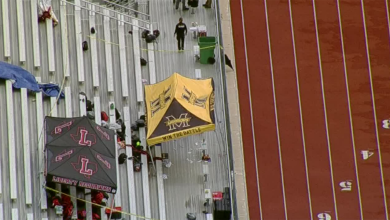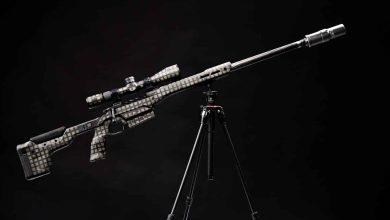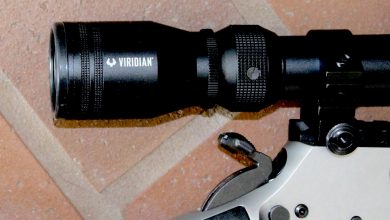Not all gun people are knife people, and not all knife people are gun people. Those of us who balance both (or who can at least appreciate both) without going too far overboard either way are probably the most well-adjusted. Nevertheless, there are folks who balk at carrying a pocketknife. They open their delivery boxes with a box cutter and probably never scrape weeds out of their driveways, but if you reach out to these folks and ask them, chances are that they have at least a half-dozen knives in their kitchen.
Knives have been used for food prep for thousands of years. Although we mostly tend to segregate kitchen knives from EDC knives, there really is no reason to do so. I’ve used my EDC knife to cut meat in an Asian restaurant that only had chopsticks, and I’ve plucked more than a few steak knives off of tables for EDC carry in a few countries where knife carrying is frowned upon.
You are more likely to use a knife to cut a piece of food into smaller pieces than you will need to use one to defend your life in a violent attack. While most knives will accomplish either task regardless of their design, it’s not a bad idea to look at knives intended for use as dining cutlery.
Stainless steels are what you want for the most part so that acids from food don’t cause permanent staining and so that they stand up to repeated washing with soap and water or even the dishwasher (we don’t recommended putting kitchen knives in the dishwasher — they should be cleaned by hand).
Serrations are optional. Truthfully, a non-serrated edge is easier to maintain and keep sharpened, but serrations will be usable more often without repeated sharpening.
A few of these options go beyond knife use and incorporate a spork or a fork. Every one sampled has been used in the field as camp gear as well as in high-end restaurants.
If you might need something to just put in your pocket in case you get burned at a restaurant that doesn’t do steak knives well, or at all, each of these designs has something to offer. These are all great alternatives to disposable plastic or even wooden cutlery, which potentially only clogs landfills and litter the oceans.
All prices listed are MSRP. Quite a few of these can be found on retail shopping sites for quite a bit cheaper.
Knife designer and gourmet chef Liong Mah came up with this multi-tool. At first glance it looks like the familiar spoon/fork or “spork,” but Mah packed a lot more into this ingenious high-tech outdoor tool.
First, there is an ergonomic spoon and a short-tined fork as the spork component. Secondly, there’s a convenient bottle opener on one side. The right side of the handle gives you an emergency screwdriver blade or light use pry bar. Three metric wrench reliefs (10mm, 8mm, 6mm) are useful for emergency repairs.
While not exactly cutlery in the strictest sense, it is convenient and a capable partner to any of the other knives here.
SPECS:
- OAL: 4 inches
- Blade length: N/A
- Blade Steel: N/A
- Handle Material: Titanium
- Weight: 1.2 ounces
- MSRP: $14
PROS:
- Lightweight and convenient to carry
- Clip to a belt loop or throw in a pocket or pack inside a plastic bag
- There are stainless steel versions but this titanium one for only a few dollars more represents the best value.
CONS:
- Depending on the food and the setting, it can be uncomfortable to use.
- A slight dull serrated section, like on a butter knife would have been more useful than metric wrench cutouts.
Pineland Cutlery is a division of Spartan Blades USA. While you may be familiar with Spartan for their badass combat knives, Pineland has a little bit of a different mission. The Carnivore represents a collaboration with V-Nives. This is a personal dining set consisting of a stainless steel knife and fork that can be disassembled and stored in a hard-sided carrying case smaller than a smart phone. The case includes a set of ceramic rods that can be threaded into the back of the case in order to sharpen your steak knife.
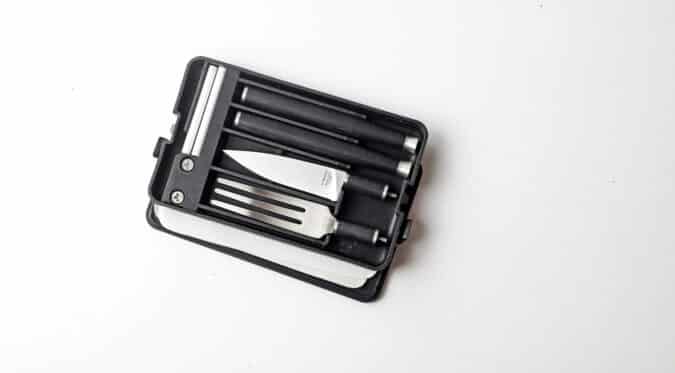
It definitely excels in this role and has been put to the test in a number of fine steakhouses, greasy spoons, and campsites alike.
The knife’s blade is constructed of VG-10 stainless steel, and the handles are G-10, making the entire set dishwasher safe. The original prototype set was made with ebony handles. It was decided that the G10 would prove to be a bit more durable.
SPECS:
- OAL: 5.25 inches
- Blade length 2.25 inches
- Blade Steel: VG-10
- Handle Material: G10
- Weight: 4.3 oz.
- MSRP: $120
PROS:
- The set works extremely well as table cutlery. The assembly is ingenious.
- It was usable right out of the box and came very sharp.
- The ceramic rods work well not only for the steak knife but for other pocketknives. They are not just a novelty.
CONS:
- Always make sure you have a source of water to clean up after eating, a water glass in a restaurant is easy enough but try to think a little bit ahead in the field so as not to put dirty utensils back in the case.
- While many of the knives in this article can fill other roles, this should be strictly for meal prep.
Gerber has been making knives and tools for over 85 years. They were one of the first manufacturers to actually work with custom knifemakers to bring about truly innovative ideas.
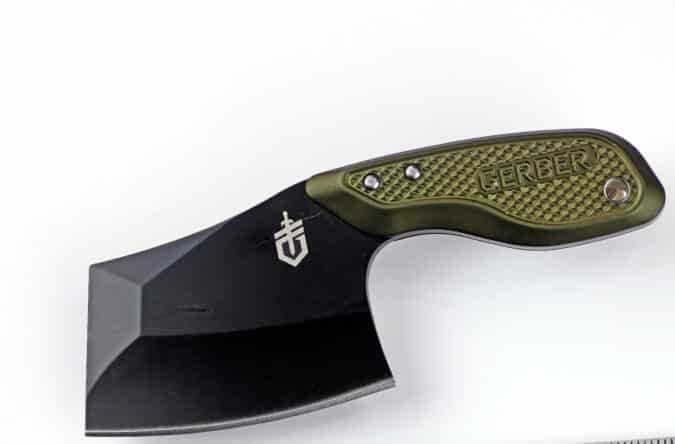
The Gerber Tri-Tip is essentially a pocket-sized cleaver. Rather than just having the profile, this one has that weighted feel that a traditional kitchen cleaver has with a bias toward the front. If you have ever used a cleaver or Chinese hatchet in a kitchen for any length of time, you will know that feel and Gerber captured it in this mini rendition.
Due to its small size, it might be easy to dismiss it as a novelty, but the Tri-Tip slices and dices with the best of them, and this has been part of our camp kitchen for quite a few years now.
SPECS:
- OAL: 5.75 inches
- Blade length : 2.875 inches
- Blade Steel: 7Cr17MoV
- Handle Material: Anodized aluminum
- Weight: 6 ounces
- MSRP: $36
PROS:
- Small, light and handy, the Tri-Tip is more cleaver than knife and works great for chopping meat and vegetables.
- I was skeptical about the aluminum handle but it turned out to be quite comfortable.
- The ergos are very good on this one despite its smaller size. I could choke all the way up to the bottom of the blade and rest my thumb on the top for finer cutting tasks.
CONS:
- A non-coated blade may have been a better choice than a black coated one, especially with food prep asits primary task.
- The belt slot on the sheath is a bit too long and relegates this as more of a piece to leave in a pocket, pouch, or in a pack as opposed to on-the-body carry.
Designed by renowned Polish custom knifemaker Marcin Slysz, the SpydieChef is an extremely refined folding knife that takes the user-friendly ergonomics and balance of a world-class chef’s knife and translates them into an all-purpose, everyday-carry folder that is impervious to the elements.
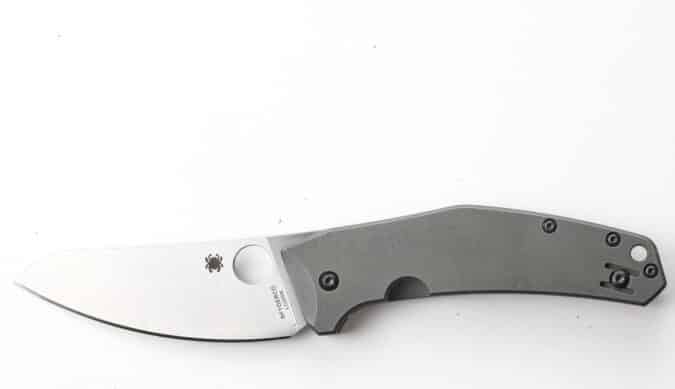
This is one of Spyderco’s famous Salt Series of ultra-corrosion-
resistant knives. The blade is constructed of LC200N and has a nice curve to it. The broad profile of the blade coupled with the full-flat grind gives the user exceptional edge geometry that ensures precise, low-friction cutting performance.
SPECS:
- OAL: 7.78 inches
- Blade length: 3.31 inches
- Blade Steel: LC200N
- Handle Material: Titanium
- Weight: 3.8 ounces
- MSRP: $404
PROS:
- LC200N might seem like a new blade steel, but this state-of-the-art nitrogen-based alloy is extremely corrosion resistant and is used by NASA for the ball bearings used in aerospace applications.
- The handle shape is a hallmark of Spyderco’s designs making for an extremely ergonomic design.
- Spyderco’s round hole makes for a fast manual opener.
CONS:
- The wire clip, although robust, can be a bit tight at first.
- A bit small to be a true chef’s knife, you will have to adjust your technique to get it to work well in that role.
Emerson Knives built its reputation by making knives for U.S. Navy SEALs and drawing on historical designs from different cultures. The key there is historical designs that actually work.
The Steak Knife blade is a very capable drop-point style that slices through everything we threw at it: steak, chicken, pork, fish, cardboard boxes, paracord, you name it.
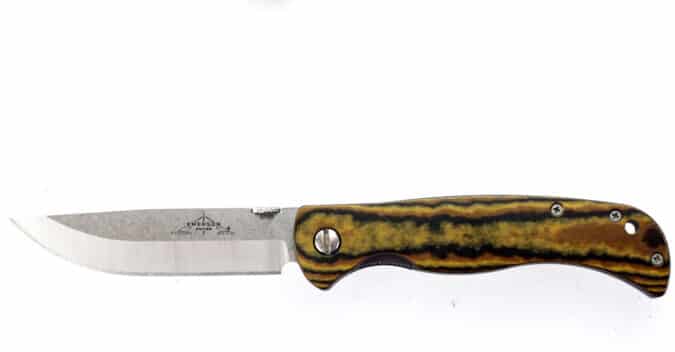
Emerson almost exclusively uses 154CM steel these days on their factory knives, which is a great everyday steel to use. Richlite scales and titanium liners round out this knife, which has been a regular EDC piece for me since I received it.
Made in the USA, but unlike most Emerson Knives, this one is not equipped with the Wave-shaped opening device, I can kind of see why as you don’t need the wait staff at Ruth’s Chris dialing 911 for a customer whipping out a blade during dinner service, but I like my Emerson’s waved for the most part.
SPECS:
- OAL: 8.8 inches
- Blade Length: 3.9 inches
- Blade Steel: 154CM stainless steel
- Weight: 5 ounces
- MSRP: $335
PROS:
- The blade is made from 154CM — that means it’s tough, laser sharp, and rust resistant — and it has an easily maintainable edge.
- It is very effective at cutting meat, especially steak.
- The Richlite scales are rock solid and very comfortable to hold.
CONS:
- At almost 9 inches in total length, this can be a bit big for some folks.
- This knife is not equipped with the Wave-shaped opening device.
Benchmade has always been a leader with regard to EDC knives but in the past few years they have plunged into the kitchen knife field with top-tier designs using top-tier materials, particularly with their Meatcrafter series. Most of their current lineup can be customized by the end user for a truly custom knife for use in the kitchen. You can choose from different steels, blade finishes, handle treatments, and even add logos or engraving.
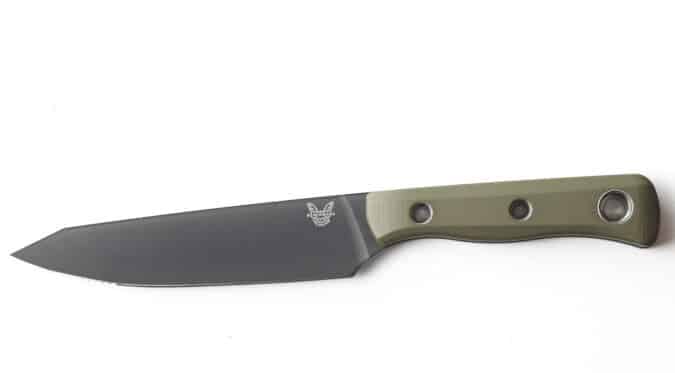
The Table Knife can be ordered in various sets or individually. They come in custom Birch boxes with magnetic lids for clean and easy transportation. The blade is ground at an optimal 14 degrees for perfectly carving up your meat.
Whether you choose one as a personal steak knife for an exquisite meal or decide to use it as a scaled-down chef’s knife, the Table Knife will definitely set you apart from the rest of your dining companions.
SPECS:
- OAL: 9.22 inches
- Blade length: 5.13 inches
- Blade Steel: CPM-154
- Handle Material: G10
- Weight: 3.19 ounces
- MSRP: $220
PROS:
- The steel in this blade is CPM-154, a high-quality stainless steel that offers hardness, toughness, and excellent edge retention.
- The handle is very ergonomic.
- Serrations are placed toward the front of the blade and are sharp and chisel ground with no secondary bevel. This is a kitchen knife that means business.
CONS:
- The Birch wood box is a work of art and thing of beauty but may be a bit bulky to take along to your local steak house. A belt sheath may have been more welcome here.
- CPM-154 is a great hard-use working steel. This one is DLC coated so it has proven resistant to the acids in tomatoes and other foods. The uncoated versions my not share this ability, though.
TOPS Knives based the Frog Market Special on a design used by butchers and fishmongers in Hanoi, Vietnam. The Frog Market Special is the thinnest blade that TOPS has ever offered with a thickness of only 1/16 of an inch. This thinner steel allows for clean, smooth cuts and gives the blade added flexibility over thicker knives.
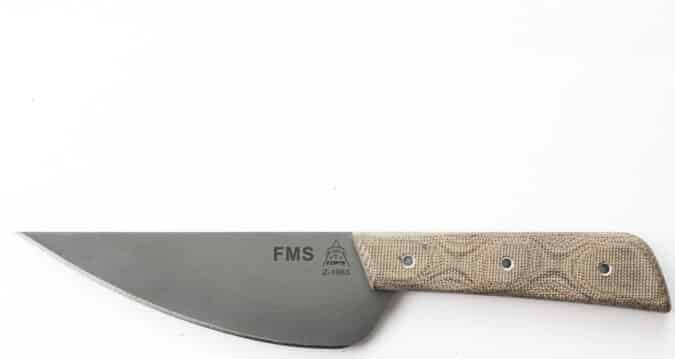
The wide heel of the blade allows for deep, shearing cuts. The steep curve up to the edge slices well. The ergonomic handle is very comfortable. Its tip is ideal for boning meats like chicken and pork or slicing the fat cap off a brisket.
Even though it is great in the kitchen, you’ll find a myriad of uses for it while camping, fishing, and hunting as well.
SPECS:
- OAL: 9.5 inches
- Blade length: 5.25 inches
- Blade Steel: 1095
- Handle Material: Tan canvas Micarta
- Weight: 3.5 ounces
- Price: $185
PROS:
- The cutting ability on this one are amazing. This is a great example of how each feature of the blade from thinness to curve, tip, and heel all come together to make for a perfect cutting tool.
- The handles are very ergonomic, and the Micarta gives you great purchase on it while working with wet or bloody meats.
- The tungsten carbide coating protects the steel from corrosion due to acids in food as well as rust.
CONS:
- Although it can be used outside the kitchen, be careful you don’t roll the edge while chopping.
- A butcher’s steel would have been a great accessory to hone out any nicks in the blade, especially if you’re using it as a boning knife.
Read the full article here


